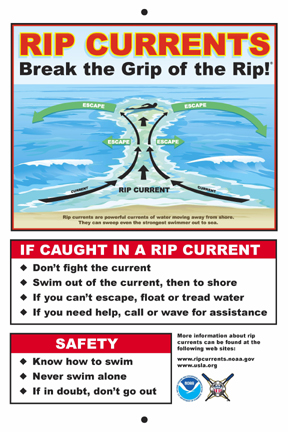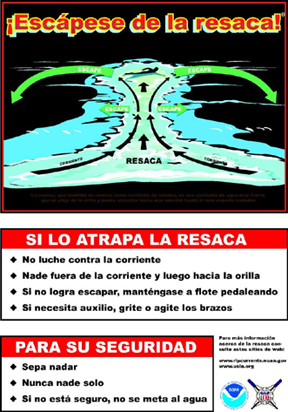Approximately one mile of beach, located in the middle of the park, is managed for swimming. This beach is staffed by lifeguards for the first few weekends of the summer season, from Memorial Day weekend until the second Saturday in June. From the second mid-June Saturday through Labor Day the beach is staffed everyday.
On the days lifeguards are present they are on duty from 10:00 A.M. until 6:00 P.M. The lifeguards are proactive and will take action to stop any activities that they deem to be potentially hazardous. All the lifeguards are well trained in ocean lifesaving and are required to know how to administer first aid.
The swimming beach attracts a large crowd during summer weekends and holidays but the number of visitors is limited by the number of parking spaces. While the beach can get crowded it is never as packed as Seaside Heights. The fee for beach access is also relatively low for a guarded public beach in New Jersey. At other nearby beaches, such as Lavallette, you have to buy beach badges for everyone over 12. At Island Beach you simply pay a per vehicle charge.
Parking areas, bathhouse pavilions with changing areas and showers, first aid stations, and concessions are located adjacent to the main swimming beach area. These facilities are open during the summer season but not at other times of the year. For safety reasons inner tubes, rafts, and other flotation devices are prohibited. If you are interested in knowing what time low and high tide will occur on the day you plan to visit, you can look at the tide tables.
Swimming Safety and Rip Currents.
Recreational swimming where trained life guards are on duty is generally very, very safe. Lifeguards pay careful attention to swimming conditions, they will stop someone from taking part in risky or dangerous activities, and if a a problem arises they take swift action to help a swimmer in distress.
Away from a protected beach area your safety is entirely in your own hands. My grandmother always told us "don't go out to far" but there are also other things to consider when swimming at an unprotected beach. Check out the conditions before you get into the water and be alert while you are swimming. Be aware that rip currents are a possibility and consider any other challenges you may face, such as a very rough high-tide or that it is end of a long day and you are tired. If your are uneasy about anything, don't go swimming. It is also not a good idea for an inexperienced swimmer to head to the beach and go swimming in the ocean alone.
Rip currents are powerful, channeled currents of water flowing away from shore. They typically extend from the shoreline, through the surf zone, and past the line of breaking waves. Rip currents can be killers. The United States Lifesaving Association estimates that the annual number of deaths due to rip currents on our nation's beaches exceeds 100. Rip currents account for over 80% of rescues performed by surf beach lifeguards.
The greatest safety precaution that can be taken is to recognize the danger of rip currents and always remember to swim at beaches with lifeguards. The United States Lifesaving Association has calculated the chance that a person will drown while attending a beach protected by USLA affiliated lifeguards at 1 in 18 million. If caught in a rip current at an unguarded beach, how you respond could make the difference between life and death .
To avoid becoming caught in a rip current, follow these rules:
1. Swim in guarded areas only
2. Avoid swimming in holes between sandbars
3. Do not swim during periods of rough surf
4. Watch for areas of discolored or rippled water
5. Never swim alone
6. If you become caught in a rip current, swim parallel to shore until free of the current
If you want to find out more about rip currents, go here.


